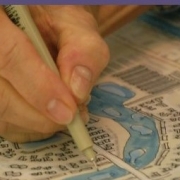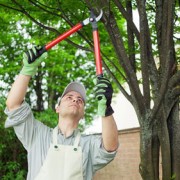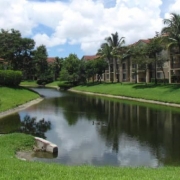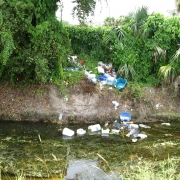What You Can Do To Prevent Drowning
/in News, ResidentialIn Florida drowning is the leading cause of death for children ages 1 to 4, and the top five for drowning deaths across all age groups. Floridians have already seen more children die by drowning at the end of June 2021 as compared to the first half of the previous nine years. Childhood safety advocates have sounded the alarm!
The advocates cite the exponential increase in the number of families vacationing and moving to Florida, who are not familiar with the dangers posed by water. Currently, the total number of children ages infant to 18 years that the Florida Department of Children and Families lists who have fatally drowned stood at 65. Of those, 60% of the fatalities are children age-3 and under. Shockingly, every year, enough young children in Florida die from drowning to fill three to four preschool classrooms.
“It was just a quiet little slip right into the water, no splash, no screaming, no yelling, no fight. She didn’t really make a ripple because the water masked her movement. You should be able to see them, but you don’t. They just quietly go underwater. This is how kids drown with a whole bunch of people around,” stated Olaudah Parker, father of a 3-year-old who suffered non-fatal drowning in Naples, Florida.
Children can drown sometimes in the presence of many distracted people, like backyard poolside parties. However, more than half of fatal drownings occur when children sneak outside and reach water while alone. But it can also be a nearby canal, river, lake, drainage ditch, water retention pond, small koi pond and fountain. In a state where water is everywhere, taking steps to safeguard children from drowning is critical. Constant, undistracted adult supervision, Coast Guard-approved life jackets, and technology tracking devices are good safety strategies. But safety devices and barriers only work if the environment contains them, caregivers remember to engage them, and children don’t disable or defeat them. In real life, the only water safety resource that can travel with children everywhere they go is the water safety training inside their own heads.
The American Academy of Pediatrics currently recommends swimming lessons for children as early as 1 to 4 years of age as well as all caregiver adults who have not learned to swim. Many local fire departments offer free Cardiopulmonary Resuscitation-CPR training, a vital technique needed in the event of a drowning. Preventing tragedy and unthinkable heartbreak requires all caregivers to be informed and layers of protection to be installed and used. Learn more at the link: Palm Beach County Drowning Prevention Coalition.
Excerpt from: The State of Children Drowning, Florida Weekly, July 29, 2021, By Laura Tichy, laura.tichy-smith@floridaweekly.com
Prepare Your Yard Now for Hurricane Season
/in Hurricanes, News, ResidentialSolid Waste Authority of Palm Beach County News – February 8, 2021
Contact: Willie Puz, Public Affairs and Recycling, 561-640-8914 (o); 561-379-2405 (c)
Preparing your yard for hurricane season can help minimize property damage and make our communities safer. The Solid Waste Authority of Palm Beach County (SWA) strongly encourages residents to implement a year-round yard maintenance program.
Major storms can leave behind incredible amounts of debris. For example, after Hurricane Irma, almost 3 million cubic yards of vegetative debris was collected. It took three months and cost more than $39 million to collect and dispose of it all. You can help minimize the potential for vegetative debris by starting your hurricane trimming now. The SWA contract for unincorporated Palm Beach County residents allows them to place a maximum of 6 cubic yards of yard waste at the curb each week for pick-up. (Check out our short video for an example of what six cubic yards looks like.) Starting now allows for plenty of time for yard waste to be safely removed so you aren’t stuck with it in the event of a storm. Once a storm threatens, it’s too late to trim trees.
Here are some tips to ensure your yard is as prepared as possible:
- Cut back all trees and weak branches that could contact
- Have foliage thinned so wind can flow freely through branches, decreasing the chance that trees or plants will be
- Contain small pieces of vegetation, such as pine needles, leaves and twigs, in bags or cans that weigh less than 50 when full and place at the curb on your scheduled pick-up day.
- Clean your yard of any items that could pose a danger to you or your neighbor’s property in hurricane-force winds, such as old lumber, broken lawn furniture, etc. Unincorporated Palm Beach County residents can place these types of items (three per week) curbside on their bulk waste collection day (if you’re not sure what day that is, you can find it by entering your address on the My Pick-Up Days page). Please note that lumber must be placed in a container weighing no more than 50 lbs., and fence materials will not be collected in unincorporated Palm Beach County.
- Place yard waste from routine maintenance at the curb on your regularly scheduled collection Residents in unincorporated Palm Beach County may place a maximum of 6 cubic yards equivalent to 3 standard size refrigerators at the curb each week. (Vegetation cannot exceed 6 in. in diameter, 6 ft. in length or 50 lbs. in weight.)
- Unincorporated Palm Beach County residents who place more than the permitted 6 cubic yards of yard waste at the curb will have no portion of the waste removed. The pile will be tagged, and the resident will be responsible for removing all the material at their own
Residents living within city, village or town limits should contact their local municipality for their collection guidelines. Check the SWA website for municipal contact information. Whether you maintain your yard yourself or use a lawn care or landscape service, if you produce significant yard waste, consider requesting a price to remove the yard waste if it exceeds the 6 cubic yard limit. Excess debris from major cutting or tree removal will need to be properly transported and disposed of, and there is a fee for disposal.
The SWA offers hurricane information to help residents understand best practices for preparedness and what the SWA prioritizes after a storm. For additional information on debris collection in unincorporated parts of the county, contact SWA Customer Information Services at 561-697-2700 or 866-792-4636 (toll-free), or visit SWA.org/Hurricane.
Additional Hurricane-Related Resources from Palm Beach County:
- Proper Pruning Techniques (Palm Beach County Planning, Zoning & Building Department)
- Routine Tree Maintenance (Palm Beach County Cooperative Extension)
- Assessing Damage and Restoring Trees After a Hurricane (Palm Beach County Cooperative Extension)
- Evaluating Horticultural Professionals’ Licenses and Credentials (Palm Beach County Cooperative Extension)
- Hiring a Contractor for Lawn Services (Palm Beach County Planning, Zoning & Building Department)
In the event of a hurricane, official safety information can be found through the Palm Beach County Division of Emergency Management.
How Flood Control Works
/in News, ResidentialMan-made stormwater ponds are attractive enhancements to many residential communities and businesses within the Lake Worth Drainage District (LWDD). More importantly, these waterbodies serve an important public safety purpose as they are part of the overall flood control system.
When it rains, stormwater flows into the retention pond and, if needed for flood control, out through the pond’s discharge control structure into the LWDD canal. Most of the time this drainage occurs unnoticed by the average individual. However, during a severe storm, flooding in streets, sidewalks, and driveways may occur. This temporary flooding may cause concern, but it is important to note these low-lying areas are designed as secondary detention areas to protect buildings and homes from flooding.
Within LWDD’s boundary, flood control is a shared responsibility and achieved through an interconnected, 3-tiered drainage system governed by 3 unique groups of people. Through communication and coordination, these 3 groups can provide effective flood control. The groups are identified as:
- Neighborhood drainage systems operated by property owners or residential associations
- Secondary drainage systems operated by LWDD or municipalities
- Primary drainage system operated by the South Florida Water Management District
Water managers in charge of primary and secondary systems are continually monitoring the weather and canal levels to proactively respond to changes in canal elevations. In anticipation of a heavy rainfall event, water managers will make operational adjustments to maintain appropriate water elevations for flood control. Additionally, throughout the year routine canal maintenance is conducted to provide unobstructed flow in the canal channel and access along the canal rights-of-way. The inspection of control structures, pumps and other infrastructure is also conducted, and repairs or replacements are made.
Property owners and residential associations have a similar role regarding their neighborhood drainage system. They must maintain their drainage infrastructure to ensure that inlets, storm drains, pipes, and emergency discharge control structures are free of potential blockages and working as designed, thus maintaining the flow of stormwater away from their property. An annual inspection of the drainage infrastructure should be made, and repairs should be completed before the onset of storm season.
LWDD works closely with property managers and community boards to manage potential flooding. Residents should first report flooding issues to their property manager because the situation may have already been identified and addressed. Residents can find more flood control information online at lwdd.net/storm-response.
Pollution Has A Cost
/in News, O & M, ResidentialKeeping Our Canal System Clean
Discarding of vegetative debris or other trash in the Lake Worth Drainage District (LWDD) canals or along the rights-of-way is illegal. Under the “Florida Litter Law” Florida Statute 403.413, dumping materials on public or private property is punishable by fine and potential jail time. Within LWDD’s service area, illegally dumped items are largely non-hazardous solid wastes that are inconvenient or costly to dispose of properly. Typical litter items include household trash, furniture, appliances, tires and vegetative debris from lawn maintenance and tree trimming. Offenders most often include residents and construction and landscape contractors.
Some of the negative effects of illegal dumping can impact public safety, the surrounding environment, and the local economy. For example, using a drainage canal as a dump site can reduce the flood control capacity of the canal and threaten the safety of residents. Additionally, trash dumped on the canal right-of-way can impede access needed for regular maintenance or emergency response during severe weather. While landfills are designed to prevent waste from leaching into the ground or adjacent waterbody, this is not true for illegal dumping which may adversely impact the surrounding area. Finally, dumping is an eyesore and governments must redirect resources to clean-up materials and provide pollution mediation.
If you witness an illegal dumping incident in progress, call your local law enforcement agency or 911. Catching dumpers in the act is the best way for police to apprehend offenders and deter future violations. Never confront someone who is dumping. Instead, try to get the vehicle license number and description of the vehicle used to commit the crime. Most importantly, share this information with your neighbors and encourage them to always dispose of yard waste and trash properly. For more information on the proper disposal of trash visit Solid Waste Authority of Palm Beach County.
Website Use Disclaimer
Contact the LWDD
Lake Worth Drainage District
13081 S. Military Trail
Delray Beach, FL 33484
Phone: (561) 498-5363
Fax: (561) 495-9694
Office Hours: 8:00 a.m. to 5:00 p.m.
Monday thru Friday except Holidays.







